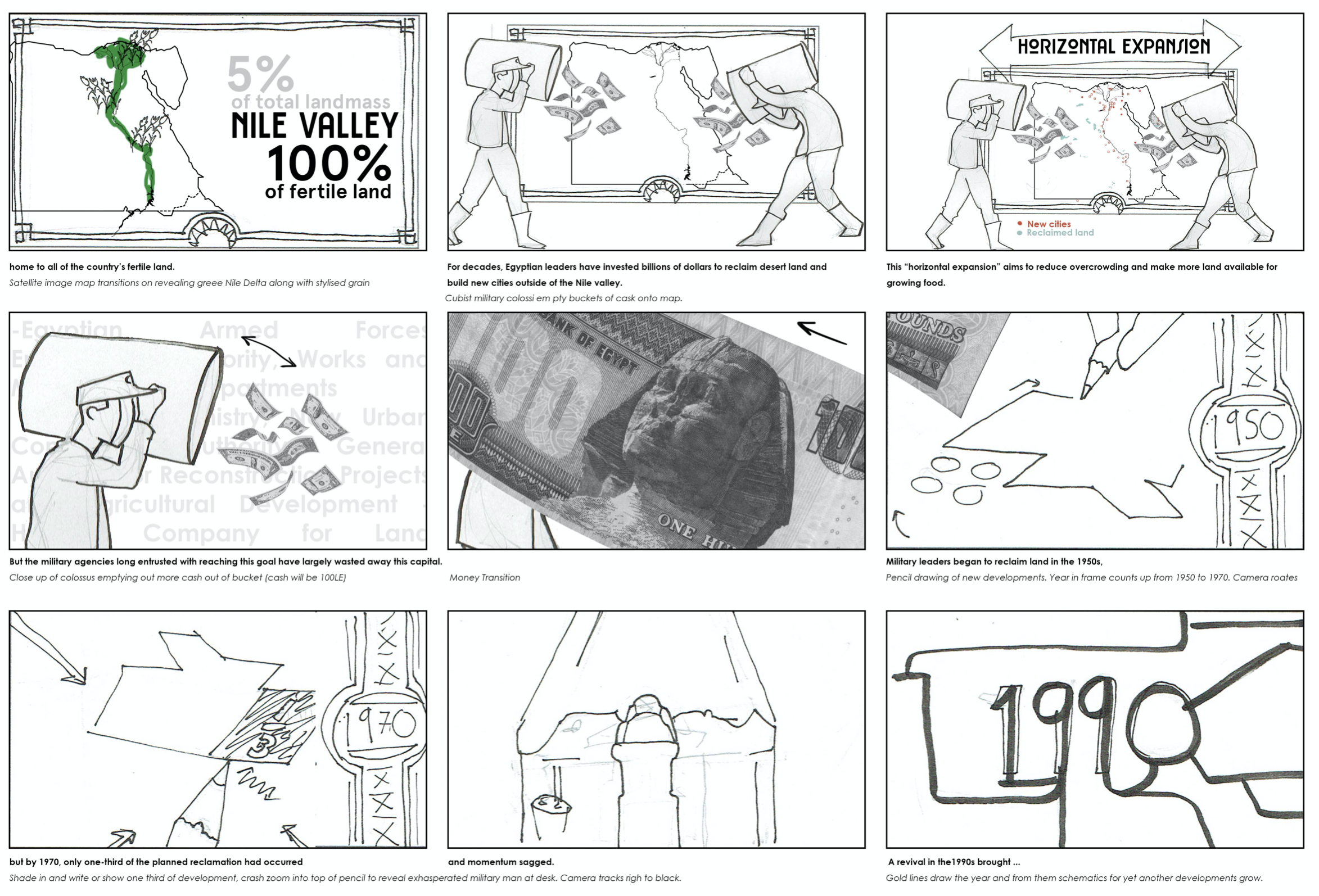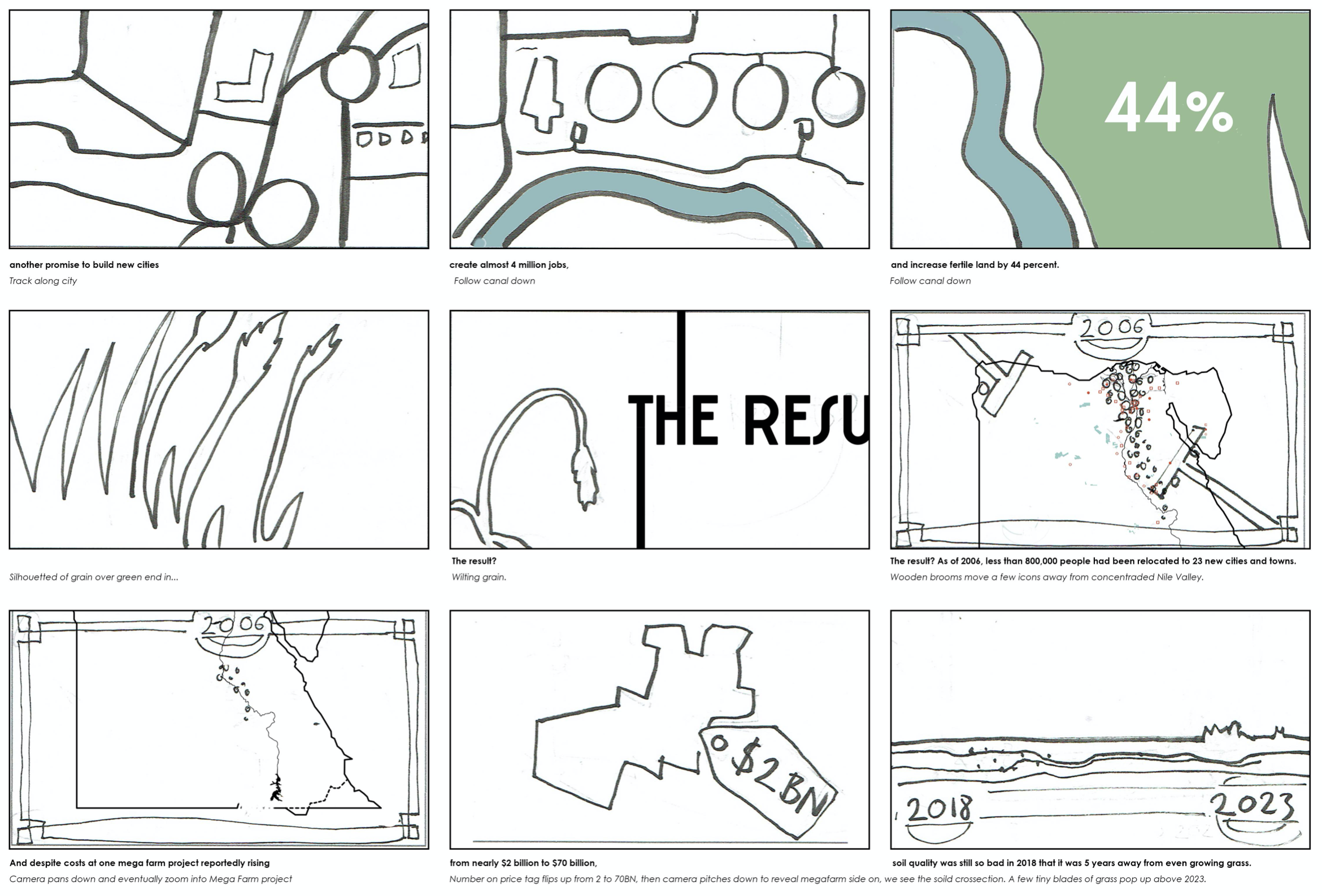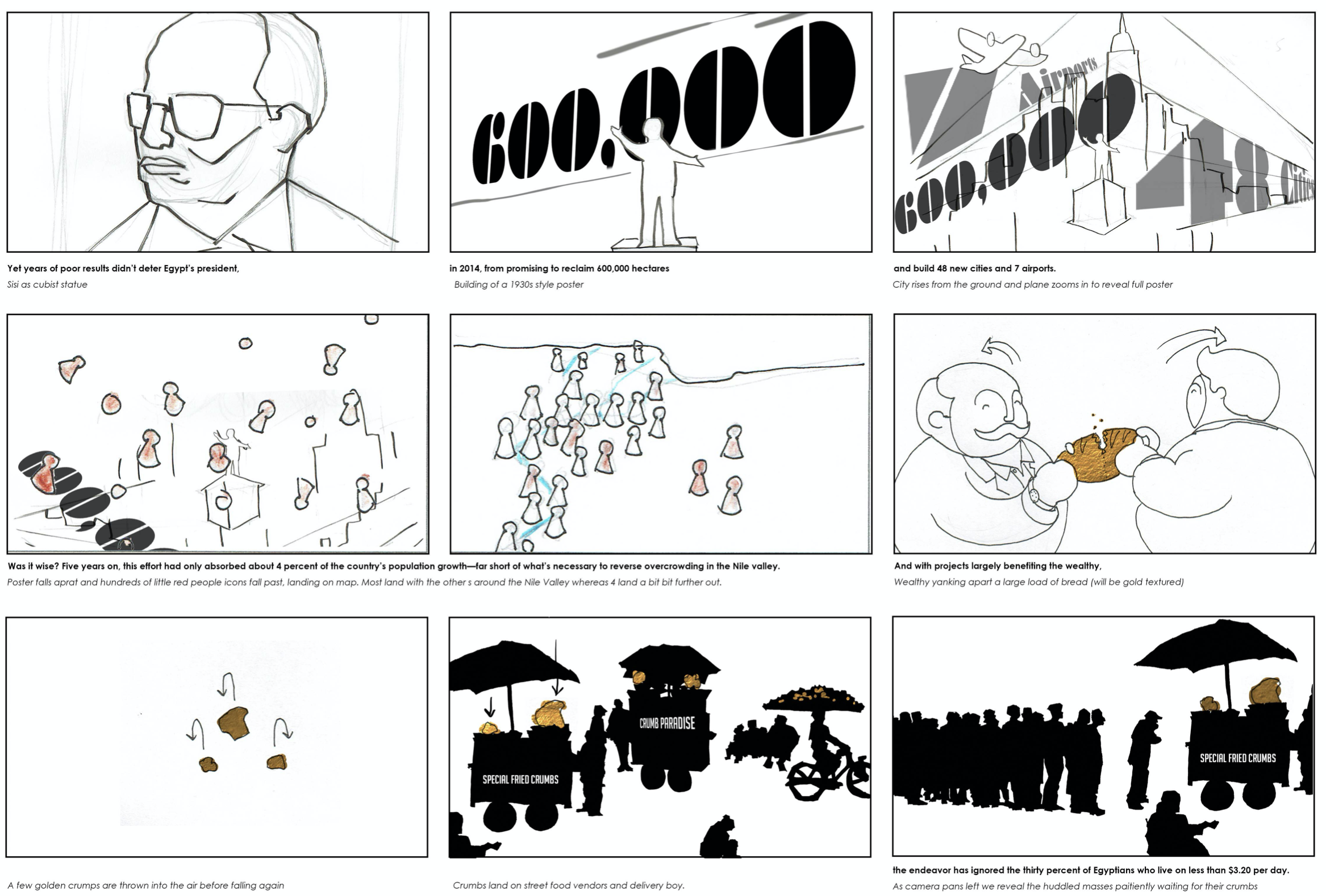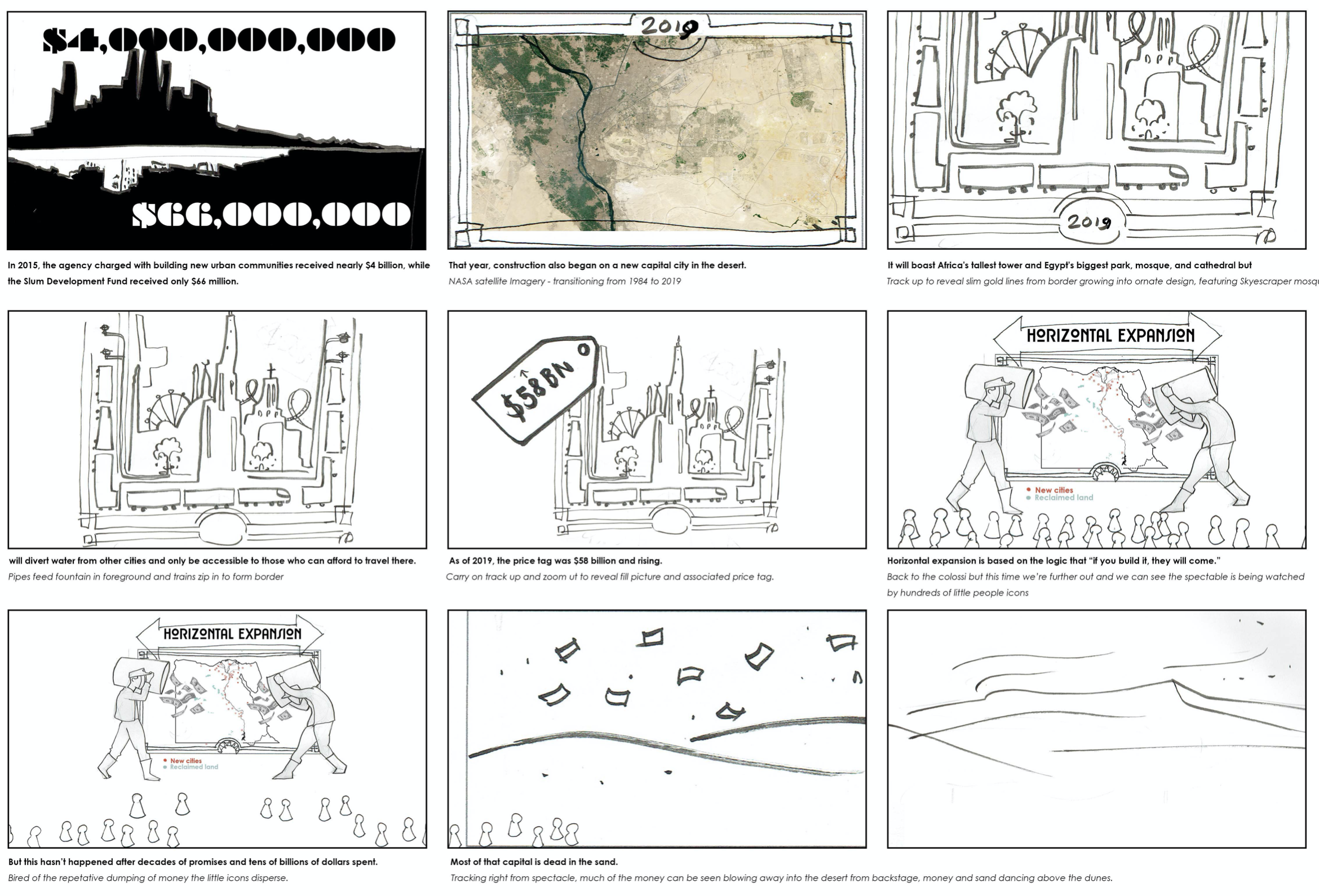“Sketch was a dream to work with. They labored with perspicacity and patience to produce an animation that exceeded my expectations in artistry, movement, and consistency of design. I wrote the script, but they made it come alive.”
Still from ‘Egypt’s Dead Capital’ animation
Why produce an animation?
There are many reasons why an animation might be the best way to meet your comms objectives. Perhaps it’s simply too challenging to film interviews with everyone on your wish list. Or maybe you want complete control over the message and you have a coherent and concise script ready to go. Some ideas, concepts and stories are extremely well suited to animation and motions graphics. Sketch has produced idents, infographics and animations for a wide range of clients. If you think animation is the right medium, we can help. Below is our animation on deep fakes entitled ‘Could Deep Fakes come for our money?
How does it work? We start with a script.
Here’s how it works. First of all, you need a script which accurately tells the story and delivers all your key messages. We can advise on the script and tell you what works best - but ultimately you know what’s critical for your audience. With the script, it’s important that the majority of what is said can be illustrated visually. Once you have ‘locked’ the script we then discuss which parts of the script you would like to highlight and feature prominently in the animation.
In terms of duration, the film can be long as you need it to be. If it’s primarily for an online audience, we would expect it to be anything from 2 to 5 minutes.
With the finalised script, the motion graphic artist can start working on a series of mood boards - finally producing a slide deck which gives you 3 different stylistic approaches (or more if necessary). This will include reference styles and designs.
In a kick off meeting we then review the different ideas and you select one of the creative styles.
Still from ‘Egypt’s Dead Capital’
2. What’s next? The storyboard.
After deciding on the creative style and approach, the motion graphic artist will produce a storyboard. Below is a fragment of a storyboard we produced for the US think tank Carnegie Endowment for Peace about the Egyptian military’s development strategy in Egypt, entitled ‘Egypt’s Dead Capital.’ Here we outline what we see during each section of the script.
And below is the animation relating the the storyboard above.
Producing a storyboard allows us to refine the flow of the scenes and visualise transitions. It’s part of the process that ensures we produce the best result and the client can give their input. Watch below the storyboard for Dead Capital come to life
3. Let’s record the voice over
Recording a VO in Central London with the client calling in to listen in and give ‘notes’
Once the script is locked, then it’s time to record the voice over. This is done by a voice over artist who records in a professional studio. We advise on the different voice over artists available, depending on the accent you require, age and gender. We send you a few samples and we narrow it down from there. During the recording, you can dial in to listen live to the recording and give feedback on the actor’s reading, so that we end up with exactly the right tone and pace.
4. Creating the visual sequence
With the VO ready to go, we start crafting the actual animation. The first stage is to design the assets and then produce an animatic - where the assets and ‘camera moves’ are done in a limited way. For some projects, we go straight to the animation.
It’s useful to think of the animation in terms of ‘scenes’ which flow and transition from one to another. A scene will comprise an idea or point made in the script that has a visual coherence and is illustrated within one framework or visual idea. Below is a ‘scene’ from the animation created for the Carnegie Endowment for International Peace.
Here’s a scene from ‘Egypt’s Dead Capital’
We work on the animation until final sign off, usually adding a non-intrusive background music track and any intro/outro branding required. The animation is now ready to be released.
5. Launching the animation online
A successful distribution strategy is vital. Releasing the animation on targeted social media channels with some limited but effective media spend can lead to a strong debate and widespread sharing. Our film ‘Egypt’s Dead Capital’, produced in both English and Arabic, provoked a strong reaction on Facebook and stimulated a debate. In less than two weeks, the film had generated 200k plus views across the Arabic speaking world. The client was very pleased with the result.
Our animation ‘Egypt’s Dead Capital’ produced in Arabic and English performed extremely on facebook stimulating a lively debate after wide sharing.
“We had a wonderful experience working with Sketch Films. We worked closely with an incredibly talented animator, who took our initial brief and created something extraordinary. The result was better than we could have imagined. I would not hesitate to recommend them to any organization that wants to produce stunning, impactful video content.”









